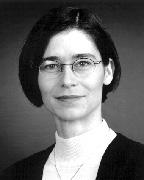As many of the nation's largest firms begin to realize the impact of the economic climate on their bottom line, few are expanding into new territory and many are contracting their investments in professional development and technology. "Bucking the trend and running against the grain is not always a bad thing," said David Hoglund, FAIA of Perkins Eastman, the cautiously optimistic chief operating officer of one of the world's top architecture and design firms.
Hoglund and his partners can speak from experience. Established in 1981, the firm has grown from a 24-person office in Manhattan to a network of 13 domestic and international office locations; the New York office is now one of the most successful and largest practices in Manhattan. Hedging on a wealth of personal and professional experience, the firm has strategically grown and cautiously expanded into new territory ahead of the curve in anticipation of the world's next building boom; most recently in South America, the Middle East, and Asia.
But if you really want to talk about "bucking the trend," consider this: amid the doom and gloom surrounding the A/E/C industry, Perkins Eastman is moving forward and expanding its presence yet again in Boston. Entering any new market is never easy, especially now, and yet the company's outlook is promising and its leadership remains optimistic that their latest decision will have far reaching benefits for the firm now and for many years to come.
Expanding into New Territory:
Opening an office in the city has been a strategic goal of the firm for many years and the opportunity to expand deeper into New England came down to a matter of timing; certainly not in the economic sense, but rather to strategically hire the right leadership for the job.
Prior to the establishment of the new office, Perkins Eastman had worked on many projects for a diverse array of regional clientele in the area including: The Hunt Center at Beverly Hospital, Regis College, Hebrew SeniorLife, and Kate Spade; but without a more intimate knowledge of the area and a well tended network of contacts for business development, the firm needed to find local talent—seasoned veterans who have been practicing architecture in the area that had the credentials and expertise to hit the ground running. Enter John Pears, RIBA and Jana Silsby, AIA, former co-workers of a Boston-based architecture firm with more than 30 years of combined expertise.
Based on their own personal experiences, each has developed a skill set so impeccably refined and far reaching that the two are able to manage and actively shape each project; from design, to finance, project management and the integration of sustainable practices. Both have been working the area for more than two decades and their personal expertise transcends the limitations of working in a new office in a cooling economy. By minimizing overhead, and maximizing its value-added resources their efforts are beginning to manifest the immediate benefits of starting lean, mean, and green.
Practice Meets Practice:
Transitioning from one firm to another is never an easy process. To the delight of Pears and Silsby, Perkins Eastman has a network of offices that can fully support one another's efforts as needed. This cross collaboration and knowledge sharing has become a cornerstone of Perkins Eastman's practice and greatly eases the pressures of personnel interchange. Additionally, when Pears was hired he also assumed a seat on the firm's board of directors. With such direct interaction with the movers and shakers of the firm, Pears is in a unique position to not only shape the future of the office, but the general direction of the firm as well based on his own wealth of professional expertise and leadership.
Charting the future with cautious stewardship the firm continues to strategically invest in tools that support a smooth work flow and exchange of knowledge in real time. This led to the creation of the firm's award-wining internet site On-line Resource for the Creative Harvest of Architecturally Relevant Discovery, or ORCHARD. More than a company news and information repository, it became the structure by which Perkins Eastman develops a practice area community (PAC)—the formal conduit for facilitating the exchange of both explicit and tacit knowledge—around each of their core practice areas.
Sharing the company's greatest assets—a high level of thought leadership, a recognized design brand, and an ever growing portfolio of national and international work—created opportunities to professionally groom new employees about the firm while heightening support and interoperability among its diverse geographic locations at home and abroad.
Creating a Greener Future:
As host of the 2008 Green Build conference the city has positioned itself as one of the leading environmentally progressive cities in the U.S. With a long standing tradition of designing buildings that are both an asset to each end user as well as the planet Perkins Eastman is committed to sustainable practices. Silsby, AIA, is an active member of the USGBC, and the not-for-profit Green Roundtable. Her own passion became the voice for implementing sustainable practices in her former firm; eventually establishing and leading the sustainable committee of her former employer.
Perkins Eastman is well positioned to make the competition in the city green with envy. Currently, the firm is working on Hebrew SeniorLife's NewBridge on the Charles, an environmentally sensitive senior living facility bordering the Charles River, west of the city.
Through careful stewardship of their strategic commitment to technology implementation and utilization, sharing the experience and expertise of talented staff, and an overarching commitment to sustainability, Perkins Eastman is positioning itself to emerge a better and stronger firm as the economic downturn characterizing 2008 begins to reverse.
Tags:
Perkins Eastman enters Boston:Starting up in a down market
March 18, 2009 - Construction Design & Engineering
 (1).jpg)









.png)